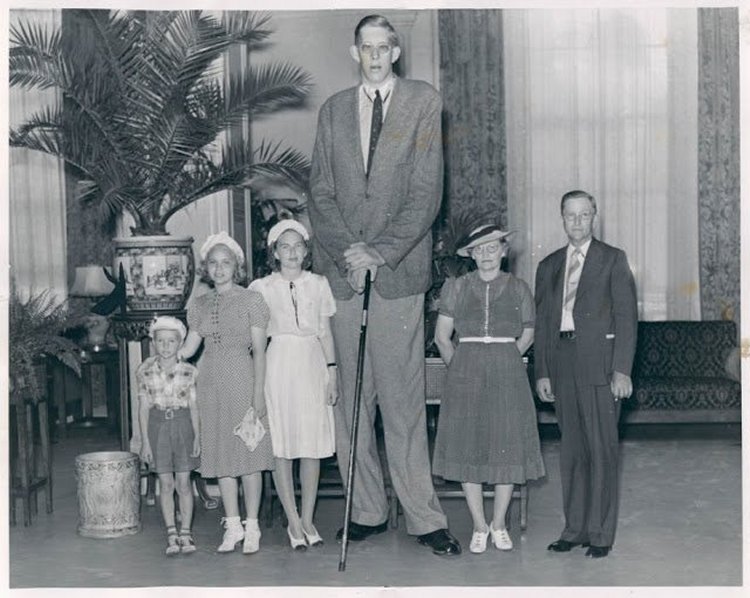MessageToEagle.com – A British anthropologist says he has finally found the Amazon giants he has been looking for.
Although Russell Dement says the tribe of giants has almost certainly died out, he and a team of German researchers have excavated two settlements in the Ecuador and Peru Amazon region and found a half dozen human skeletons that measure between seven and eight feet in height,’ reports CuencaHighLife.
Dement said the settlements dated to the early 1400s in one case and to the mid-1500s in the second. “We are very early in our research and I am only able to provide a general overview of what we have found,” he said.

“I don’t want to make claims based on speculation since our work is ongoing. Because of the size of the skeletons, this has both anthropological and medical implications.”
Two of the skeletons have been sent to Freie Universität in Germany for analysis, including one that measures eight feet, while the others remain on site in Ecuador.
See also:
- The Giant Of Illinois: Robert Pershing Wadlow Was The World’s Tallest Man
- Giants Of Idaho: The Untold Story Of Their Existence And Disappearance
- Chang Woo Gow – The Kind And Intelligent Chinese Giant
- Giants Roamed The Earth Millions Of Years Ago
Dement says he has heard about the race of large Amazonians for more than 25 years as he has studied the Shuar and Achuar Amazon indigenous communities.
“The elders in the communities tell a story about very tall, pale-skinned people who used to live nearby,” he says. “They described them as peaceful, gentle people who were always welcomed in their villages.”
Stories of the giant Amazonians have been known for more than a hundred years, since the first anthropologists made contact with Amazon tribes. One of the first mentions of them was in an article by the German researcher Franz Bosch, who heard about it from a community of the Shuar, southeast of Cuenca.
“There are quite a few references to the giants in the scientific literature,” says Dement, “but because the Shuar insist that they belonged to the ‘spirit world’ it was always assumed that they were legend and not fact.”
What caught Dement’s attention was the fact that the same story is told by indigenous Amazonians over a large area of the jungle area east of the Andes, in both Ecuador and Peru. “Because the stories were so similar and because I heard them so frequently no matter where I worked, I’ve always thought there might be something to them.”
In December 2013, Dement received a phone call from a Shuar friend who had found part of skeleton about 70 miles from Cuenca. “He said that it was of one of the giants,” says Dement. “I was in Quito at the time and of course rushed down to take look.”
What Dement found was the skull and rib cage of a large female who had lived about 600 years ago. The remains had been exposed by flooding of a nearby creek. With the help of his friend, he quickly located the rest of skeleton, which had been moved in the flood. When he assembled the entire skeleton, it measured seven feet, four inches.
Within two months, Dement assembled a team of four research associates from Freie Universität in Berlin. The university also provided funding for excavation and research work. “Even though I had been working with Freie for many years, I was concerned that they might not give a grant for someone looking for giants,” says Dement. “To outsiders, especially scientists, I understand this sounds a little hair-brained.”
Once together, Dement’s team worked for six months, unearthing three more complete skeletons and parts of two more, collecting artifacts and mapping the area. During the work, and with the assistance of his Shuar friends, Dement located a second settlement about twenty miles away, on the Ecuadorian – Peruvian border, where two more skeletons were found. That settlement dated to about 1550.
“The exciting thing about the second site is that it proved that the tribe had been in the area for at least 150 years, and probably a lot longer,” says Dement. “It also means that they were both pre-Columbian and post-Columbian, although we’ve found no evidence that they interacted with the Spanish.”
Preliminary study indicates that the six bodies were of relatively healthy, well-proportioned humans. “The skeletons show no signs of diseases such as the hormonal growth problems that are common in most cases of gigantism,” Dement says. “In all the skeletons, the joints seemed healthy and lung cavity appeared large. One of the skeletons that we have dated was of a female who was about 60 when she died, much older than typical cases of gigantism.”
Dement says the burials were elaborate. “Bodies were wrapped in leaves that were still partly intact when we excavated them. All the bodies were surrounded by a thick layer of clay, which prevented water intrusion and is probably responsible for the fact that the skeletons are in relatively good condition.”
Dement says he expects the work at Freie to continue for at least a year after which he and his team will publish their findings. “Because of the sensational nature of this, we have to be extremely diligent in our research since it will be met with a great deal of skepticism.”
In the meantime, he says he is collecting DNA samples from the Shuar living near the excavations to determine if there was interbreeding with the giants.
For the record, the tallest person to live in modern times was Robert Pershing Wadlow, who died at age 22 in 1940. Called the Alton (Illinois) Giant, Wadlow was just under nine feet at the time of his death. His extreme height was the result of a condition known as pituitary gigantism.
MessageToEagle.com
source: CuencaHighLife







